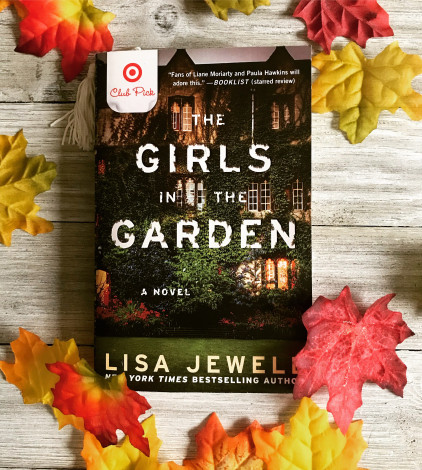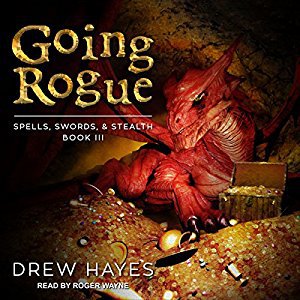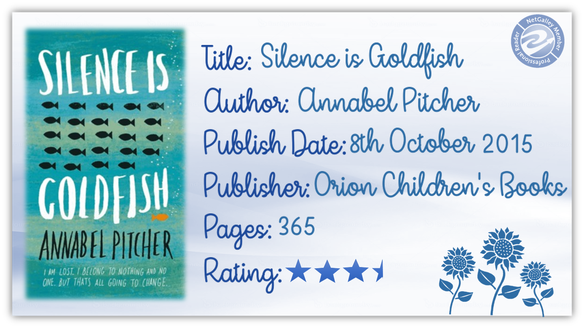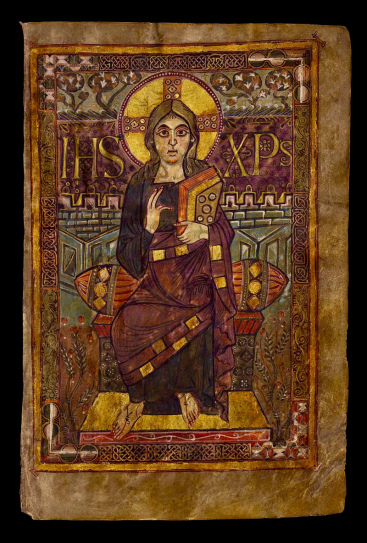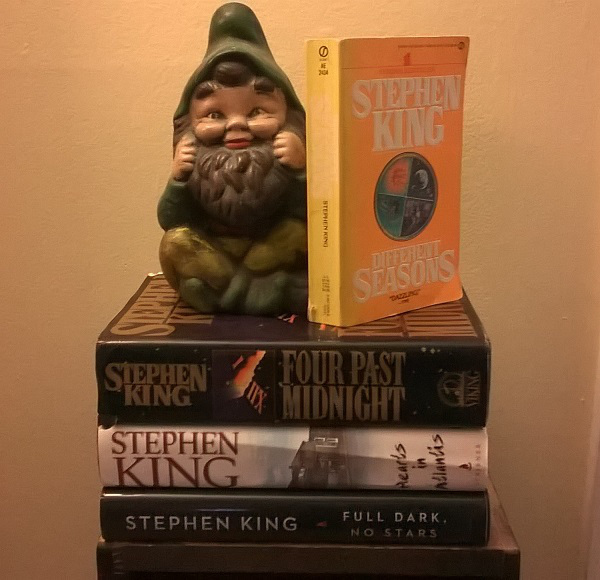
[Explanation of Reading Journal Entries/Ratings]
Stephen King Week Introduction
#20 – 15
14. THE RAFT
from Skeleton Crew (1985). Originally published in Gallery (November 1982).
4 out of 5 stars.
Previously reviewed. (In fact, my first post here.)
The Plot:
A carnivorous oil slick traps four college students on a lake raft.
[27]
He called out, “Get away from there, Rachel!”
Then everything happened very fast.
(p.287)
13. QUITTERS, INC.
from Night Shift (1978). Previously unpublished.
4 out of 5 stars.
The Plot:
This company will get you to quit smoking. Guaranteed.
I read this as a kid, before ever picking up a cigarette. Then again while in the midst of a two-pack-a-day habit. And now, eight years post-quitting.
With those three perspective I can say with confidence: This story’s got something for everyone.
[28]
A horrible picture came: his life stretching before him and not a cigarette to be found.
(p.344)
[29]
Morrison losing the physical compulsion to smoke little by little, but never quite losing the psychological craving, or the need to have something in his mouth – cough drops, Life Savers, a toothpick.
(p.347)
True, true, true. I still have a nostalgia for smoking, even with the physical addiction gone. I keep packs of Tic-Tacs scattered through my apartment and in my car. Gum, cough drops, the tendency to eat too much. I miss smoking like it was a friend who moved away. I think I always will. King captures all of this perfectly.
[30]
“When a romantic tries to do a good thing and fails, they give him a medal. When a pragmatist succeeds, they wish him in hell.”
(p.349)
[31] The punishment for smoking transgressions begins with an electrocution session for Morrison’s wife while Morrison watches. King, in a very smart move, says only this about the torture:
It was the longest thirty seconds of his life.
(p.350)
King already described what happens to a rabbit in this cage; we can imagine what it’s doing to Morrison’s wife and our imagination makes it worse.
12. 1408
from Everything’s Eventual (2002). Originally released on the Blood and Smoke audiobook (1999).
4 out of 5 stars.
The Plot (from King’s introduction to the story):
Every writer of shock/suspense tales should write at least one story about the Ghostly Room At The Inn.
(p.365)
The climax of “1408” uses the non-logic of a nightmare, which can easily come off as confusing, ridiculous, or ineffective. But King’s solid set-up allows the nonsense to work extremely well. Images from this story have stuck with me since my first reading. It’s a creepy one, folks.
[32] References:
He had studied with Jane Smiley. He had once been on a panel with Stanley Elkin. He had once aspired (…) to be published as a Yale Younger Poet.
(p.369)
Jane Smiley (b.1949) is an American novelist. She won the Pulitzer Prize for Fiction in 1992 for her novel A Thousand Acres (1992). From 1981 to 1996 she was a Professor of English at Iowa State University, teaching undergraduate and graduate creative writing workshops, and continuing to teach there even after relocating to California.
Stanley Elkin (1930 – 1995) was an American novelist, short story writer, and essayist. His extravagant, satirical fiction revolves around American consumerism, popular culture, and male-female relations.
[33] Fact check:
Purple [covers] sold scary books better than any other color, Mike had been told.
(p.370)
I’m not sure how to find out if this is true or assumed true in the market. Browsing through the top horror on Amazon, I see a lot of blues and gray with white and red accents. Pretty much the only purple I see is for romantic paranormal adventures and fantasy-tinged horror.
[34] References:
“I read one story from each book. The one about the Rilsby house in Kansas (…)”
“Ah, yes. The axe murders.” The fellow who had chopped up all six members of the Eugene Rilsby family had never been caught.
“Exactly so. And the one about the night you spent camped out on the graves of the lovers in Alaska who committed suicide – the ones people keep claiming to see about Sitka – and the account of your night in Gartsby Castle.”
(p.371)
The “Rilsby house” might be a play on the Villisca axe murders, though the family in that case was named Moore and the murders were in Iowa.
The Villisca axe murders occurred between the evening of June 9, 1912, and early morning of June 10, 1912, in the town of Villisca in southwestern Iowa. The six members of the Moore family and two house guests were found bludgeoned in the Moore residence. All eight victims, including six children, had severe head wounds from an axe. The crime remains unsolved.
The City and Borough of Sitka is a unified city-borough located on Baranof Island and the southern half of Chichagof Island in Alaska. As of the 2010 census, the population was around 9,000. In terms of land area, it is the largest city-borough in the U.S., with a land area of 2,870 square miles. Urban Sitka, the part that is usually thought of as the “city” of Sitka, is on the west side of Baranof Island.
I can’t find a specific suicide case from Sitka that could inspire this ghost tale.
Gartsby Castle also appears to be invented.
[35]
He had come to admire Olin in a weird way. And when you admired a man, you wanted to tell him the truth.
(p.373)
[36] Reference:
“I may never win the Pulitzer Prize for investigating the Barking Ghost in Mount Hope Cemetery, but I would have written fairly about him if he had shown up.”
(p.373)
There are several Mount Hope Cemeteries in the United States (Rochester, Boston, etc), but because this is King, I’m assuming it’s a reference to Mount Hope in Bangor, Maine, which was also used in Pet Sematary (note [9]). I’m not finding a specific “barking ghost,” but I’m assuming there’s a similar legend about the cemetery.
[37]
“There were several who had weeping fits, one who had a laughing fit – I don’t know why someone laughing out of control should be more frightening than someone sobbing, but it is.”
(p.377)
[38] A nod to the Stanley hotel which inspired The Shining?
“I doubt that I would have had much more luck in convincing the Stanley Corporations board of directors that I took a perfectly good room off the market because I was afraid that spooks cause the occasional travelling salesman to jump out the window.”
(p.382)
[39] Section II of the story opens with hints of Enslin’s fate before going back and giving us the details to get us there. It sends our imagination barreling at full throttle:
The most interesting artifact left in the wake of Michael Enslin’s brief stay (it lasted about seventy minutes) in room 1408 was the eleven minutes of recorded tape in his minicorder, which was charred a bit but not even close to destroyed. The fascinating thing about the narration was how little narration there was. And how odd it became.
(p.384)
[40] Reference:
I brushed my teeth next to the tub where Sir David Smythe supposedly drowned both his wives.
(p.387)
A thinly veiled reference to George Joseph Smith (1872 – 1915), an English serial killer and bigamist. In 1915, he was convicted and subsequently hanged for the slayings of three women, the case becoming known as the “Brides in the Bath Murders.”
We looked up Smith for A Kiss Before Dying (note [22]).
[41]
There was a little night-table to either side of the bed. On one was a telephone – black and large and equipped with a dial. The finger-holes in the dial looked like surprised white eyes.
(p.392)
[42] Reference:
A hell of a trip, great, but spooky. Especially the big rock in the middle [of the Great Australian Desert], Ayers Rock.
(p.399)
Uluru, also known as Ayers Rock, is a large sandstone rock formation in the southern part of the Northern Territory in central Australia. It lies 208 miles south west of the nearest large town, Alice Springs, 280 miles by road. Uluru is notable for appearing to change color at different times of the day and year, most notably when it glows road at dawn and sunset.
[43] Using the same number twice makes this sound less like number salad:
There’s an interesting picture of Mike Enslin in Treating the Burn Victim: A Diagnostic Approach, the sixteenth edition of which appeared about sixteen months after Mike’s short stay in room 1408 of the Hotel Dolphin.
(p.400)
Try reading the above with any other number in the second sixteen’s place; it becomes cumbersome.
[44]
“If anyone was negligent that night, Mr. Farrell, it was your client. He believed too much in nothing.”
(p.401)
11. FAIR EXTENSION
from Full Dark, No Stars (2010). Previously unpublished.
Previously reviewed (notes [98] – [112]).
4.5 out of 5 stars.
The Plot:
Roadside salesman Mr. Elvid makes an offer to terminally ill Dave Streeter: Streeter can have an extension on his life if he chooses another to take the negative consequences. Streeter picked the man he hates most: his best friend.
[45]
“This isn’t some half-assed morality tale. I’m a businessman, not a character out of ‘The Devil and Daniel Webster.’ ”
(p.269)
10. CHILDREN OF THE CORN
from Night Shift (1978). Originally published in Penthouse (March 1977).
4.5 out of 5 stars.
The Plot:
An arguing couple finds themselves in a Nebraska ghost town; all the adults are gone but the children are still here.
Even if you’ve never read the story or seen one of the (many) movies, popular culture has probably given you a very specific image of The Children of the Corn: creepy Amish-looking kids in cornfields, killing every adult in sight. It’s too bad the surprise has been taken away; I can’t imagine how insane this story would be if you didn’t know what was coming.
King is incredibly gracious in moving his plot along. He lets his main character catch on right-quick instead of bumbling around in denial for hundreds of pages. And at its core, this is a very creepy, very well-written tale which the movies have unfortunately cheapened over the years.
[46] Opening lines:
Burt turned the radio on too loud and didn’t turn it down because they were on the verge of another argument and he didn’t want it to happen. He was desperate for it not to happen.
(p.390)
[47]
The wind rustled softly through the growing man-high corn, making a weird sound like respiration.
(p.393)
[48] Vocabulary:
Two hanks of clothesline had been wrapped around it and tied in large, clownish grannies.
(p.395)
A granny knot, more commonly known as a lubber’s knot, is a nautical term for an improperly made reef or square knot, likely to slip loose.
[49]
“What about the suitcase?” she asked.
He trotted back down the road to where it stood on the white line, like the focal point in an Impressionist painting.
(p.397)
[50] Reference:
“Who’s that?”
Burt glanced at [the neck clasp]. “Hopalong Cassidy, I think.”
(p.400)
I’ve heard of Hopalong Cassidy but have no idea if he’s fictional/real:
Hopalong Cassidy or Hop-Along Cassidy is a fictional cowboy hero created in 1904 by the author Clarence E. Mulford (1883 – 1956), who wrote a series of popular short stories and many novels based on the character.
In his early writings, Mulford portrayed the character as rude, dangerous, and rough-talking. He had a wooden leg which caused him to walk with a little “hop”, hence the nickname. From 1935, the character was transformed into a clean-cut, sarsaparilla-drinking hero. Sixty-six popular films appeared, only a few of which were loosely based on Mulford’s stories.
Random fun fact: Mulford was living in Fryeburg, Maine when he created Hopalong Cassidy. Fyreburg is next door to Bridgeton, where King lived for a while and where “The Mist” (stay tuned…) takes place.
[51] Vocabulary:
Her slowly seining hands had snagged it on the bottom of the suitcase.
(p.401)
seine
noun – a fishing net that hangs vertically in the water with floats at the top and weights at the bottom edge, the ends being drawn together to encircle the fish.
verb – fish (an area) with a seine.
[52] Reference:
You want to give her Ban 5000 a workout before going back and admitting she was right to start with.
(p.415)
Ban 5000 is a deodorant that, in the 1970s, used the advertising slogan “Get under the dome.” I wonder if King got the title of his book from the ad campaign. There is something kind of evocative about it…
[53] Burt sees a couple of items in the town’s church and almost immediately pieces everything together. From his inner monologue:
Well, Vicky, what happened – don’t laugh – is that Dick Deigan and his friends (…) they got religious and they killed off their parents. All of them (…) And somehow (…) they decided that nineteen was as old as any of them could live.
(p.418 – 419)
The truth of this is obvious to us because we know this damned story, just like we know the man in the hockey mask is going to kill teenagers at Crystal Lake. But try to imagine following this leap if you had no outside reference. It’s insane and awesome and creepy and I love King for all of it.
Burt continues to keep his shit together and it’s refreshing for a character in a horror story to know, understand, and accept the insanity of their situation:
That was when Burt heard it coming: not the children but something much larger, moving through the corn and toward the clearing. Not the children, no. The children wouldn’t venture into the corn at night. This was the holy place, the place of He Who Walks Behind the Rows.
(p.430)
[54]
He stared up at Burt for a moment, and then his hands dropped away from the haft of the knife, and he fell forward.
A soft sighing sound from the children gathered around the Thunderbird. They stared at Burt. Burt stared back at them, fascinated.
(p.423)
[55]
He began to scream. But he did not scream long.
(p.431)
#9 –7
Advertisements Share this: